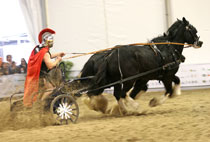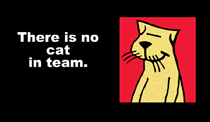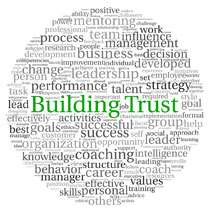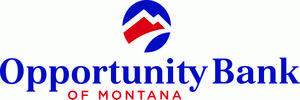 People make up teams. Every person on your team has different skills and every team member’s skill set brings something to the table. Team members also possess different behavioral styles, motivators, and different competencies. In addition, every team member has various levels of business acumen, and of course diverse levels of EQ. Is EQ more important than skill sets? Can an entire team have an EQ score?
People make up teams. Every person on your team has different skills and every team member’s skill set brings something to the table. Team members also possess different behavioral styles, motivators, and different competencies. In addition, every team member has various levels of business acumen, and of course diverse levels of EQ. Is EQ more important than skill sets? Can an entire team have an EQ score?
 Teams usually have a mutual goal. Sports teams have a goal to win a game or tournament. Scientific teams might have a goal to find a cure, or gather information or find the source of a problem. Work teams have projects such as improving marketing, conducting customer research or product development to name a few examples. What happens to the team goal if the entire team is not clear on the goal or if each member has his or her own agenda either for the team or themselves?
Teams usually have a mutual goal. Sports teams have a goal to win a game or tournament. Scientific teams might have a goal to find a cure, or gather information or find the source of a problem. Work teams have projects such as improving marketing, conducting customer research or product development to name a few examples. What happens to the team goal if the entire team is not clear on the goal or if each member has his or her own agenda either for the team or themselves?
A few descriptive words that come to mind are chaos, confusion, conflict, and failure. Have any of these ever happened to a team of which you’ve been a member? Have you ever been an observer of a team, such as a sports team, and observed the team falling apart right before your eyes. This can often happen during major playoff games where the pressure to win is even greater than normal. How does this same scenario occur in business teams?
 Your favorite sports team takes the field, court, or ice. Team members are dressed in their respective team uniforms and colors, coaches are on the sidelines, referees are watching every move, the crowd supports their favorite, the sports casters call and analyze every play, and there are great rewards awaiting the winning team. What more could a team want? The better question is, does YOUR have all this?
Your favorite sports team takes the field, court, or ice. Team members are dressed in their respective team uniforms and colors, coaches are on the sidelines, referees are watching every move, the crowd supports their favorite, the sports casters call and analyze every play, and there are great rewards awaiting the winning team. What more could a team want? The better question is, does YOUR have all this?
 Diane Bogino is President of Performance Strategies, Inc., providing clarity, focus, and strategies for coaching clients, conducting in-depth analysis for teams and individual members, and developing and delivering customized training programs for real world business solutions. She is an in demand public speaker and the author of five books.
Diane Bogino is President of Performance Strategies, Inc., providing clarity, focus, and strategies for coaching clients, conducting in-depth analysis for teams and individual members, and developing and delivering customized training programs for real world business solutions. She is an in demand public speaker and the author of five books.
Diane has spoken for, coached, consulted, and provided training for:
the Centers for Disease Control (CDC), Coca-Cola, Emory University, United States Forestry Service, Sheraton Hotel, Elsevier, Renaissance Hotel, Israeli Consulate, Israeli Department of Defense, Penta Hotel, American Association Institute of Certified Public Accountants (AICPA), Pensacola State College, Opportunity Bank, American Association of Occupational Health Nurses (AAOHN), KH International, and many other organizations as well as individuals.
Diane is passionate about bringing tools, ideas, and strategies to help make your business and employees thrive. Through books, speeches, courses, and workshops, Dane is dedicated to helping you grow your capabilities and connections and getting you to that next level of success, no matter where you are in the process right now.
Affiliations and Certifications
- Masters in Industrial Organizational Psychology (I/O)
- Bachelor of Science in Psychology (BS)
- Registered Corporate Coach (RCC)
- Leaders Coaching Leaders Coach (LCL) and Facilitator
- Certified Professional Behavioral Analyst (CPBA) (DISC Certified)
- Certified Professional Driving Forces Analyst (CPDFA)
- Certified TriMetrix HD Analyst (CPHDA)
- Certified Professional Emotional Quotient Analyst (CPEQA)
- Certified Master Trainer and Instructional Designer/Developer
- National Speakers Association (National & Local) (Past President of Georgia Chapter)
- In a former life, Diane was an actress and model. She appeared in a movie and in numerous commercials and did a national spot for Delta airlines. She also did voice overs, print and runway modeling. At one time she was “Daffey Diane,” (some say she still is!), a magic clown. She also performed magic as herself winning Magician of the Year for Greater Atlanta.
Personal Note:Contact me today and let’s have a discussion of ideas on increasing success for you, your business, and your employees. Call 404-320-7834 or email This email address is being protected from spambots. You need JavaScript enabled to view it..
.
 In ancient Rome, chariot races were one of the main forms of entertainment. In fact, they were, at times, more dangerous than the gladiator fights. These races were run by teams of fearless charioteers who were often as famous as our sport team figures of today. So I began to wonder how charioteer teams of old are like our modern day business teams. OK, maybe I had a little too much time on my hands last week. But stay with me here.
In ancient Rome, chariot races were one of the main forms of entertainment. In fact, they were, at times, more dangerous than the gladiator fights. These races were run by teams of fearless charioteers who were often as famous as our sport team figures of today. So I began to wonder how charioteer teams of old are like our modern day business teams. OK, maybe I had a little too much time on my hands last week. But stay with me here.
Beware: Sharp Turns
Turns are one of the things that made the chariot races so dangerous. The end of the race track had conical tuning-posts or metae indicating a sharp turn that had to be navigated by several chariots at once. Failing to navigate this turn correctly could result in losing control of the chariot, being maimed or even death. Members of teams would attempt to head off other chariots going into these turns.
T o some, the word power is a four letter word, in other words, a dirty word. Power just means the ability to accomplish work. Power exists and failure to acknowledge it, can prove disastrous. Some people who know they have power may avoid being members of work teams. Others with power may try to unduly exert that power if they are a member of a team. What powers do you have?
o some, the word power is a four letter word, in other words, a dirty word. Power just means the ability to accomplish work. Power exists and failure to acknowledge it, can prove disastrous. Some people who know they have power may avoid being members of work teams. Others with power may try to unduly exert that power if they are a member of a team. What powers do you have?
Power is typically associated with the movers and shakers of the world, like the Donald Trumps, the Warren Buffets or the executives in a corporation. Yes, these types all have power. Does the CEO have more power than a VP just because he or she is the CEO? In most cases, probably yes. However, there are times and circumstances when someone else’s power might trump the CEO’s power. Let’s take a look at the type of powers you might see and use on a daily basis.
Expertise or What You KnowLet’s say you are excellent at negotiation and the CEO is not. You might be called into the trenches to land the next big deal with your negotiation skills. You have the power - at least for the "moment." Having information or expertise can also be used in power plays to embarrass, surprise or frustrate someone.
 Being consistent is akin to having a good brand. Think of it as part of your personal power. Being a consistent performer at a high level, gives us personal power. This applies to performance teams as well. How can an individual or a team walk the talk if they fail to produce at a high level consistently? Therein lies the rub, what does it take to be consistent, consistently?
Being consistent is akin to having a good brand. Think of it as part of your personal power. Being a consistent performer at a high level, gives us personal power. This applies to performance teams as well. How can an individual or a team walk the talk if they fail to produce at a high level consistently? Therein lies the rub, what does it take to be consistent, consistently?
Define Your Brand
Most every organization has a mission statement. Teams, too, should have a mission statement as well. Certainly the mission statement should be in alignment with the organization’s, but be clear in representing what your team stands for, the work it produces and the value it brings to the table. Every team member should be on board with the team’s mission statement and live its philosophy each day.
 There is a lot of rhetoric out there about finding people with the right combination of knowledge, skills, and attributes or KSAs, and then understanding how particular sets of KSAs need to work together to complete projects. Part of the confusion centers around finding these mixes of talent. Do these people come from the recruiting process, are they people within the organization whom we can train, or are there people on other teams within the organization who might have a skill mismatch and would perform brilliantly on another project?
There is a lot of rhetoric out there about finding people with the right combination of knowledge, skills, and attributes or KSAs, and then understanding how particular sets of KSAs need to work together to complete projects. Part of the confusion centers around finding these mixes of talent. Do these people come from the recruiting process, are they people within the organization whom we can train, or are there people on other teams within the organization who might have a skill mismatch and would perform brilliantly on another project?
Some management research and instructional elements don’t help as with this example of Combo Mumbo Jumbo. “In an effort to establish a career and talent combination mechanism, an empirical analysis was conducted of the performance level of the administration of the senior executive knowledge base, both accredited and non-accredited, skill expertise, both innate and acquired, and the internality of individualistic attributes.” Seriously? Is that even legal in your state?
Having teams with the right combination of talents isn’t rocket science or combo mumbo jumbo. The answer to the question in the first paragraph is yes. The right combination of talent can come from either inside or outside your organization. Let’s review.
 Carter McNamara, http://goo.gl/bIK5XA, a well-known business consultant, states,
Carter McNamara, http://goo.gl/bIK5XA, a well-known business consultant, states,
"The system's overall behavior depends on its entire structure (not the sum of its various parts). The structure determines the various behaviors, which determine the various events. Too often, we only see and respond to the events. That's why, especially in the early parts of our lives, we can be so short-sighted and reactionary in our lives and in our work. We miss the broader scheme of things."
This concept is something I strive to instill in coaching clients by helping them to see their lives and their careers as a system. No, it’s not too romantic, but it does help the thinking, analytical, and goal setting process to take roots. This applies to business, management, and leadership as well.
 Think about your favorite movie star. He or she probably has “it.” In the case of movie stars “it” is described as having a certain sexual appeal. OK, we’re not going there with teams. The “it” referred to here is communication. While communication may not sound too appealing in a sexy sort of way, it, or rather communication, does serve as a measurement and conduit in team building. You may think that factors such as communication and team productivity do not present hard and fast facts and they are not measureable. Well, now we have scientific evidence and the measurements to back these up.
Think about your favorite movie star. He or she probably has “it.” In the case of movie stars “it” is described as having a certain sexual appeal. OK, we’re not going there with teams. The “it” referred to here is communication. While communication may not sound too appealing in a sexy sort of way, it, or rather communication, does serve as a measurement and conduit in team building. You may think that factors such as communication and team productivity do not present hard and fast facts and they are not measureable. Well, now we have scientific evidence and the measurements to back these up.
Alex “Sandy” Pentland recently conducted research on teams with varying performance. His research was conducted in a variety of industries and teams from innovative to backroom operations and call centers to name a few. The measurement instrument was in the form of an electronic badge that the teams wore around their necks. The badges collected data on tone of voice, body language, whom they talked to and more. Yes, the data was based on the questions who, what, why and where. One of the interesting findings is that the “what” didn’t matter. In other words, what these individuals (the who) were discussing didn’t matter, just that they were communicating. The “where” is the conversations that were held outside of the regular work meetings or in the less formal environments like on break or at lunch. Here’s what the study revealed.
 Business is serious. The success of business affects stakeholders both inside and outside any organization. We use general terms when describing these stakeholders like, the Board, the community, the employees, the customers, the vendors, the management, (the insert yours here) __________. Yet, each of these collective nouns consist of individual people with individual characteristics, talents, attributes, skills, needs, wants, and goals. Without these individuals, in their collective noun categories, we have no business and consequently no stakeholders. Which has more impact on business, the skill of these individuals or their EQ?
Business is serious. The success of business affects stakeholders both inside and outside any organization. We use general terms when describing these stakeholders like, the Board, the community, the employees, the customers, the vendors, the management, (the insert yours here) __________. Yet, each of these collective nouns consist of individual people with individual characteristics, talents, attributes, skills, needs, wants, and goals. Without these individuals, in their collective noun categories, we have no business and consequently no stakeholders. Which has more impact on business, the skill of these individuals or their EQ?
 Wouldn’t it be great to roll through each work day with a team that is collaborative, communicates well, values training and development, and has a genuine concern for the future leadership of the organization? Or is your team rolling on deflated tires? Is a team such as the description gone the way of Ford’s Edsel? (OK, I’m dating myself now, and you younger readers, just Google it). Such a team does exist at Goodyear North America. First a brief scenario of how this team began its journey as conveyed in the August issue of HR Magazine.
Wouldn’t it be great to roll through each work day with a team that is collaborative, communicates well, values training and development, and has a genuine concern for the future leadership of the organization? Or is your team rolling on deflated tires? Is a team such as the description gone the way of Ford’s Edsel? (OK, I’m dating myself now, and you younger readers, just Google it). Such a team does exist at Goodyear North America. First a brief scenario of how this team began its journey as conveyed in the August issue of HR Magazine.
Their journey began with two questions, 1) who would replace current leaders? and 2) how was the company preparing future leaders? In addition, business pressures from global competition and volatile economic conditions were looming. Something had to be done. The decision was made to restructure the company. Now the team was able to identify the type of leadership the company would need to drive it forward. This, in turn, helped the team to identify the type of development these leaders needed to steer the company in the right direction. The team made the commitment to develop the process and put it in place to accelerate the shift. How does a company develop such a team?
Goodyear North America paved the way for their executives by laying out a roadmap taking each executive and the team to their destination of creating a tandem team.

The title to this article has a double meaning…getting your team to work as one and not as separate silos; and getting them to function as a real team. Top executives often manage teams that focus on their own business units. Working together as a team sounds like a fundamentally good idea. Unfortunately, these executives do not possess the experience for getting their teams to function as one. In fact, according to an article by Debra Nunes with the Korn Ferry Institute…
“There are a couple of reasons why today’s senior leaders aren’t particularly good at working together. For one thing, it wasn’t a point of emphasis for many of them when they were coming through the ranks. Much of their working careers have been spent managing risk, defining a market, recognizing opportunities and leading subordinates. They weren’t, however, often asked to be a teammate of similarly driven, talented colleagues. Even as recently as the 1990s, only about 20 percent of professional work was team-based. Now it’s about 80 percent.”
 There is no blueprint for teams because every team is different, and every individual member of the team is different. Both teams and individuals have goals, challenges, levels of expertise, and experiences. These differences can be the catalyst for chaos. While we are finally learning how diversity of ideas and opinions is a good idea, are we equipped at handling the chaos that can bring?
There is no blueprint for teams because every team is different, and every individual member of the team is different. Both teams and individuals have goals, challenges, levels of expertise, and experiences. These differences can be the catalyst for chaos. While we are finally learning how diversity of ideas and opinions is a good idea, are we equipped at handling the chaos that can bring?
Yes, if you do teambuilding like the typical  rah, rah, let’s come together and sing Khumbaya team building sessions. Or how about a retreat with those spray paint ball gun games? One time, our company went on one of those. It was out in the boonies, it was cold as the dickens and we had to use outdoor toilets. Yeah, that really made me want to be productive and hug management. Growing up, we had an outhouse and I’ve worked hard not to have to “go there” again. And finally, there’s the very popular afternoon at Dave and Buster’s. OK, yes it’s indoors, no one is shooting at you and there is usually indoor plumbing. On the other hand, it’s noisy and no opportunity for any in depth conversations. So forget about building a relationship. Everyone goes in eight different directions to find their own favorite brand of, well we’re here and we’ve gotta’ do something. Usually, there is not even a meal together as everyone eats at different times whenever the mood hits them or they get hungry and just leave. I don’t know about you, but I’m not really feelin” it here. So let’s look at what teambuilding is for and when it’s appropriate.
rah, rah, let’s come together and sing Khumbaya team building sessions. Or how about a retreat with those spray paint ball gun games? One time, our company went on one of those. It was out in the boonies, it was cold as the dickens and we had to use outdoor toilets. Yeah, that really made me want to be productive and hug management. Growing up, we had an outhouse and I’ve worked hard not to have to “go there” again. And finally, there’s the very popular afternoon at Dave and Buster’s. OK, yes it’s indoors, no one is shooting at you and there is usually indoor plumbing. On the other hand, it’s noisy and no opportunity for any in depth conversations. So forget about building a relationship. Everyone goes in eight different directions to find their own favorite brand of, well we’re here and we’ve gotta’ do something. Usually, there is not even a meal together as everyone eats at different times whenever the mood hits them or they get hungry and just leave. I don’t know about you, but I’m not really feelin” it here. So let’s look at what teambuilding is for and when it’s appropriate.
Teambuilding is not meant for creating false “bonding” events, but rather for the following business strategies:
 No one likes working with toxic people. Further, bad behavior rubs off on others and they take up the mantle. Of course, the opposite is true as well - someone’s good behavior can be contagious too. The best idea is to avoid hiring these “poisonous pals.” Unfortunately, these bad boys and girls don’t have a toxic tattoo label across their forehead. They are experts at hiding their destructive behavioral tendencies from even the most competent interviewers or even when stressing certain cultural factors or settings and they can manage to keep their toxicity hidden even after being on board for a while. However, even nontoxic people can demonstrate poor behavioral choices when under stress.
No one likes working with toxic people. Further, bad behavior rubs off on others and they take up the mantle. Of course, the opposite is true as well - someone’s good behavior can be contagious too. The best idea is to avoid hiring these “poisonous pals.” Unfortunately, these bad boys and girls don’t have a toxic tattoo label across their forehead. They are experts at hiding their destructive behavioral tendencies from even the most competent interviewers or even when stressing certain cultural factors or settings and they can manage to keep their toxicity hidden even after being on board for a while. However, even nontoxic people can demonstrate poor behavioral choices when under stress.
 The changing face of teams has been occurring for eons and managing them has sometimes come with the need for specific skills, talents, and knowledge. Even in the earliest stages of human development, when teamwork was the answer to survival itself, there were challenges. There was, no doubt, some maverick who knew a better way to slay dinner or speed up the hunt or handle the fruits of the hunters’ labor. The Roman army was an example of successful teamwork because of strong training and once again survival hinging on its success. In modern times survival and teams have taken on different meanings and faces. Who wears these faces and why is this important?
The changing face of teams has been occurring for eons and managing them has sometimes come with the need for specific skills, talents, and knowledge. Even in the earliest stages of human development, when teamwork was the answer to survival itself, there were challenges. There was, no doubt, some maverick who knew a better way to slay dinner or speed up the hunt or handle the fruits of the hunters’ labor. The Roman army was an example of successful teamwork because of strong training and once again survival hinging on its success. In modern times survival and teams have taken on different meanings and faces. Who wears these faces and why is this important?
 Americans often find communication difficult even with one another. Now add today’s global workforce in the mix and your dream of global expansion, enhanced diversity and collaboration may turn into a nightmare that paralyzes your team preventing collaboration and productivity. Poor communication can evolve from even the most mundane circumstances.
Americans often find communication difficult even with one another. Now add today’s global workforce in the mix and your dream of global expansion, enhanced diversity and collaboration may turn into a nightmare that paralyzes your team preventing collaboration and productivity. Poor communication can evolve from even the most mundane circumstances.
As one who works with multicultural clients, I often find them becoming stumped, demotivated and hesitant to interact and communicate at even the most basic levels. Some examples include a student from a Nordic country who was stuck on how to respond to, “Hello, How are you doing?” He froze at the thought of delivering a reply that might prove to be insulting to his American co-workers. Another executive thought it rude that not every one of his American co-workers looked up and acknowledged that he had entered the break room. In other words, in his country, even if you are engaged in a serious conversation, you stop, acknowledge the person entering the room, speak to them and then jump back your conversation. A Hispanic executive found it difficult to find a polite way to end a telephone conversation. A Japanese executive was horrified and embarrassed to find that she had been using the work “physical” for “fiscal’.
Educational or intelligence levels do not automatically guarantee that there will be no confusion. For example, I once worked with a Chinese financial analyst whose father was a doctor. She was educated in Great Britain and was highly intelligent. Yet still she struggled with our idioms, slang and wit. Most all of my clients wrestle, at some level, with the idea of climbing the corporate ladder, getting recognized for their efforts, office politics and even speaking up in meetings. Of course, these same concerns spill over into team work. What can been done to reduce these communication nightmares?
 Does your team work together? No, I don’t mean do they cooperate, collaborate, and have a culture of kumbayah. Do they physically work together every day? This is an important question to ask as it can change the way you manage, save you time, and resources.
Does your team work together? No, I don’t mean do they cooperate, collaborate, and have a culture of kumbayah. Do they physically work together every day? This is an important question to ask as it can change the way you manage, save you time, and resources.
Recently, I had the opportunity to deliver a program to a group of mid-level executives, each in a different city and in charge of a different market sector for their organization. The manager, a VP in the organization was intent on teambuilding and that had been his management focus. However, during the program, one of the participants stated aloud that he found no benefit in their weekly teambuilding phone calls. Ouch!
The executive and I looked at his team and he realized that that they don’t work together or even depend on one another for resources or business. While that is true, I pointed out to the manager that the concentration should be on having his team focus on the strategic plan, ensure that each of his managers buys into the vision for the organization, and then drive that vision throughout their own teams. But don’t they still need to collaborate and cooperate? Glad you asked.
 This is the fourth and final part of a four part series.
This is the fourth and final part of a four part series.
Teamwork or rather high performing teamwork is a much coveted attribute in any business with more than one employee. The need for good teamwork can be by two people, a department, between departments, city wide, nationally and even globally. We hear managers lament, “Why can’t we just get along.” or the ever popular, “If people would just talk things out, everything would be OK.”
Excellent teamwork involves more than just going on the annual retreat, holding hands and singing Kumbaya. There are four elements need to be in place to encourage strong team functionality
Surrendering Control
Trust is a highly desirable commodity in high performing teams. Having trust is not only something the manager of the team needs to possess. Trust is also a much needed element among team members. Those among us who are what often referred to as “control freaks” have the most difficulty with trust.
 People make up teams. Every person on your team has different skills and every team member’s skill set brings something to the table. Team members also possess different behavioral styles, motivators, and different competencies. In addition, every team member has various levels of business acumen, and of course diverse levels of EQ. Is EQ more important than skill sets? Can an entire team have an EQ score?
People make up teams. Every person on your team has different skills and every team member’s skill set brings something to the table. Team members also possess different behavioral styles, motivators, and different competencies. In addition, every team member has various levels of business acumen, and of course diverse levels of EQ. Is EQ more important than skill sets? Can an entire team have an EQ score? Teams usually have a mutual goal. Sports teams have a goal to win a game or tournament. Scientific teams might have a goal to find a cure, or gather information or find the source of a problem. Work teams have projects such as improving marketing, conducting customer research or product development to name a few examples. What happens to the team goal if the entire team is not clear on the goal or if each member has his or her own agenda either for the team or themselves?
Teams usually have a mutual goal. Sports teams have a goal to win a game or tournament. Scientific teams might have a goal to find a cure, or gather information or find the source of a problem. Work teams have projects such as improving marketing, conducting customer research or product development to name a few examples. What happens to the team goal if the entire team is not clear on the goal or if each member has his or her own agenda either for the team or themselves? Your favorite sports team takes the field, court, or ice. Team members are dressed in their respective team uniforms and colors, coaches are on the sidelines, referees are watching every move, the crowd supports their favorite, the sports casters call and analyze every play, and there are great rewards awaiting the winning team. What more could a team want? The better question is, does YOUR have all this?
Your favorite sports team takes the field, court, or ice. Team members are dressed in their respective team uniforms and colors, coaches are on the sidelines, referees are watching every move, the crowd supports their favorite, the sports casters call and analyze every play, and there are great rewards awaiting the winning team. What more could a team want? The better question is, does YOUR have all this? Diane Bogino is President of Performance Strategies, Inc., providing clarity, focus, and strategies for coaching clients, conducting in-depth analysis for teams and individual members, and developing and delivering customized training programs for real world business solutions. She is an in demand public speaker and the author of five books.
Diane Bogino is President of Performance Strategies, Inc., providing clarity, focus, and strategies for coaching clients, conducting in-depth analysis for teams and individual members, and developing and delivering customized training programs for real world business solutions. She is an in demand public speaker and the author of five books.








 In ancient Rome, chariot races were one of the main forms of entertainment. In fact, they were, at times, more dangerous than the gladiator fights. These races were run by teams of fearless charioteers who were often as famous as our sport team figures of today. So I began to wonder how charioteer teams of old are like our modern day business teams. OK, maybe I had a little too much time on my hands last week. But stay with me here.
In ancient Rome, chariot races were one of the main forms of entertainment. In fact, they were, at times, more dangerous than the gladiator fights. These races were run by teams of fearless charioteers who were often as famous as our sport team figures of today. So I began to wonder how charioteer teams of old are like our modern day business teams. OK, maybe I had a little too much time on my hands last week. But stay with me here. o some, the word power is a four letter word, in other words, a dirty word. Power just means the ability to accomplish work. Power exists and failure to acknowledge it, can prove disastrous. Some people who know they have power may avoid being members of work teams. Others with power may try to unduly exert that power if they are a member of a team. What powers do you have?
o some, the word power is a four letter word, in other words, a dirty word. Power just means the ability to accomplish work. Power exists and failure to acknowledge it, can prove disastrous. Some people who know they have power may avoid being members of work teams. Others with power may try to unduly exert that power if they are a member of a team. What powers do you have? Being consistent is akin to having a good brand. Think of it as part of your personal power. Being a consistent performer at a high level, gives us personal power. This applies to performance teams as well. How can an individual or a team walk the talk if they fail to produce at a high level consistently? Therein lies the rub, what does it take to be consistent, consistently?
Being consistent is akin to having a good brand. Think of it as part of your personal power. Being a consistent performer at a high level, gives us personal power. This applies to performance teams as well. How can an individual or a team walk the talk if they fail to produce at a high level consistently? Therein lies the rub, what does it take to be consistent, consistently? There is a lot of rhetoric out there about finding people with the right combination of knowledge, skills, and attributes or KSAs, and then understanding how particular sets of KSAs need to work together to complete projects. Part of the confusion centers around finding these mixes of talent. Do these people come from the recruiting process, are they people within the organization whom we can train, or are there people on other teams within the organization who might have a skill mismatch and would perform brilliantly on another project?
There is a lot of rhetoric out there about finding people with the right combination of knowledge, skills, and attributes or KSAs, and then understanding how particular sets of KSAs need to work together to complete projects. Part of the confusion centers around finding these mixes of talent. Do these people come from the recruiting process, are they people within the organization whom we can train, or are there people on other teams within the organization who might have a skill mismatch and would perform brilliantly on another project? Carter McNamara,
Carter McNamara,  Think about your favorite movie star. He or she probably has “it.” In the case of movie stars “it” is described as having a certain sexual appeal. OK, we’re not going there with teams. The “it” referred to here is communication. While communication may not sound too appealing in a sexy sort of way, it, or rather communication, does serve as a measurement and conduit in team building. You may think that factors such as communication and team productivity do not present hard and fast facts and they are not measureable. Well, now we have scientific evidence and the measurements to back these up.
Think about your favorite movie star. He or she probably has “it.” In the case of movie stars “it” is described as having a certain sexual appeal. OK, we’re not going there with teams. The “it” referred to here is communication. While communication may not sound too appealing in a sexy sort of way, it, or rather communication, does serve as a measurement and conduit in team building. You may think that factors such as communication and team productivity do not present hard and fast facts and they are not measureable. Well, now we have scientific evidence and the measurements to back these up. Business is serious. The success of business affects stakeholders both inside and outside any organization. We use general terms when describing these stakeholders like, the Board, the community, the employees, the customers, the vendors, the management, (the insert yours here) __________. Yet, each of these collective nouns consist of individual people with individual characteristics, talents, attributes, skills, needs, wants, and goals. Without these individuals, in their collective noun categories, we have no business and consequently no stakeholders. Which has more impact on business, the skill of these individuals or their EQ?
Business is serious. The success of business affects stakeholders both inside and outside any organization. We use general terms when describing these stakeholders like, the Board, the community, the employees, the customers, the vendors, the management, (the insert yours here) __________. Yet, each of these collective nouns consist of individual people with individual characteristics, talents, attributes, skills, needs, wants, and goals. Without these individuals, in their collective noun categories, we have no business and consequently no stakeholders. Which has more impact on business, the skill of these individuals or their EQ? Wouldn’t it be great to roll through each work day with a team that is collaborative, communicates well, values training and development, and has a genuine concern for the future leadership of the organization? Or is your team rolling on deflated tires? Is a team such as the description gone the way of Ford’s Edsel? (OK, I’m dating myself now, and you younger readers, just Google it). Such a team does exist at Goodyear North America. First a brief scenario of how this team began its journey as conveyed in the August issue of HR Magazine.
Wouldn’t it be great to roll through each work day with a team that is collaborative, communicates well, values training and development, and has a genuine concern for the future leadership of the organization? Or is your team rolling on deflated tires? Is a team such as the description gone the way of Ford’s Edsel? (OK, I’m dating myself now, and you younger readers, just Google it). Such a team does exist at Goodyear North America. First a brief scenario of how this team began its journey as conveyed in the August issue of HR Magazine.
 There is no blueprint for teams because every team is different, and every individual member of the team is different. Both teams and individuals have goals, challenges, levels of expertise, and experiences. These differences can be the catalyst for chaos. While we are finally learning how diversity of ideas and opinions is a good idea, are we equipped at handling the chaos that can bring?
There is no blueprint for teams because every team is different, and every individual member of the team is different. Both teams and individuals have goals, challenges, levels of expertise, and experiences. These differences can be the catalyst for chaos. While we are finally learning how diversity of ideas and opinions is a good idea, are we equipped at handling the chaos that can bring? rah, rah, let’s come together and sing Khumbaya team building sessions. Or how about a retreat with those spray paint ball gun games? One time, our company went on one of those. It was out in the boonies, it was cold as the dickens and we had to use outdoor toilets. Yeah, that really made me want to be productive and hug management. Growing up, we had an outhouse and I’ve worked hard not to have to “go there” again. And finally, there’s the very popular afternoon at Dave and Buster’s. OK, yes it’s indoors, no one is shooting at you and there is usually indoor plumbing. On the other hand, it’s noisy and no opportunity for any in depth conversations. So forget about building a relationship. Everyone goes in eight different directions to find their own favorite brand of, well we’re here and we’ve gotta’ do something. Usually, there is not even a meal together as everyone eats at different times whenever the mood hits them or they get hungry and just leave. I don’t know about you, but I’m not really feelin” it here. So let’s look at what teambuilding is for and when it’s appropriate.
rah, rah, let’s come together and sing Khumbaya team building sessions. Or how about a retreat with those spray paint ball gun games? One time, our company went on one of those. It was out in the boonies, it was cold as the dickens and we had to use outdoor toilets. Yeah, that really made me want to be productive and hug management. Growing up, we had an outhouse and I’ve worked hard not to have to “go there” again. And finally, there’s the very popular afternoon at Dave and Buster’s. OK, yes it’s indoors, no one is shooting at you and there is usually indoor plumbing. On the other hand, it’s noisy and no opportunity for any in depth conversations. So forget about building a relationship. Everyone goes in eight different directions to find their own favorite brand of, well we’re here and we’ve gotta’ do something. Usually, there is not even a meal together as everyone eats at different times whenever the mood hits them or they get hungry and just leave. I don’t know about you, but I’m not really feelin” it here. So let’s look at what teambuilding is for and when it’s appropriate. No one likes working with toxic people. Further, bad behavior rubs off on others and they take up the mantle. Of course, the opposite is true as well - someone’s good behavior can be contagious too. The best idea is to avoid hiring these “poisonous pals.” Unfortunately, these bad boys and girls don’t have a toxic tattoo label across their forehead. They are experts at hiding their destructive behavioral tendencies from even the most competent interviewers or even when stressing certain cultural factors or settings and they can manage to keep their toxicity hidden even after being on board for a while. However, even nontoxic people can demonstrate poor behavioral choices when under stress.
No one likes working with toxic people. Further, bad behavior rubs off on others and they take up the mantle. Of course, the opposite is true as well - someone’s good behavior can be contagious too. The best idea is to avoid hiring these “poisonous pals.” Unfortunately, these bad boys and girls don’t have a toxic tattoo label across their forehead. They are experts at hiding their destructive behavioral tendencies from even the most competent interviewers or even when stressing certain cultural factors or settings and they can manage to keep their toxicity hidden even after being on board for a while. However, even nontoxic people can demonstrate poor behavioral choices when under stress. The changing face of teams has been occurring for eons and managing them has sometimes come with the need for specific skills, talents, and knowledge. Even in the earliest stages of human development, when teamwork was the answer to survival itself, there were challenges. There was, no doubt, some maverick who knew a better way to slay dinner or speed up the hunt or handle the fruits of the hunters’ labor. The Roman army was an example of successful teamwork because of strong training and once again survival hinging on its success. In modern times survival and teams have taken on different meanings and faces. Who wears these faces and why is this important?
The changing face of teams has been occurring for eons and managing them has sometimes come with the need for specific skills, talents, and knowledge. Even in the earliest stages of human development, when teamwork was the answer to survival itself, there were challenges. There was, no doubt, some maverick who knew a better way to slay dinner or speed up the hunt or handle the fruits of the hunters’ labor. The Roman army was an example of successful teamwork because of strong training and once again survival hinging on its success. In modern times survival and teams have taken on different meanings and faces. Who wears these faces and why is this important? Americans often find communication difficult even with one another. Now add today’s global workforce in the mix and your dream of global expansion, enhanced diversity and collaboration may turn into a nightmare that paralyzes your team preventing collaboration and productivity. Poor communication can evolve from even the most mundane circumstances.
Americans often find communication difficult even with one another. Now add today’s global workforce in the mix and your dream of global expansion, enhanced diversity and collaboration may turn into a nightmare that paralyzes your team preventing collaboration and productivity. Poor communication can evolve from even the most mundane circumstances. Does your team work together? No, I don’t mean do they cooperate, collaborate, and have a culture of kumbayah. Do they physically work together every day? This is an important question to ask as it can change the way you manage, save you time, and resources.
Does your team work together? No, I don’t mean do they cooperate, collaborate, and have a culture of kumbayah. Do they physically work together every day? This is an important question to ask as it can change the way you manage, save you time, and resources. This is the fourth and final part of a four part series.
This is the fourth and final part of a four part series.